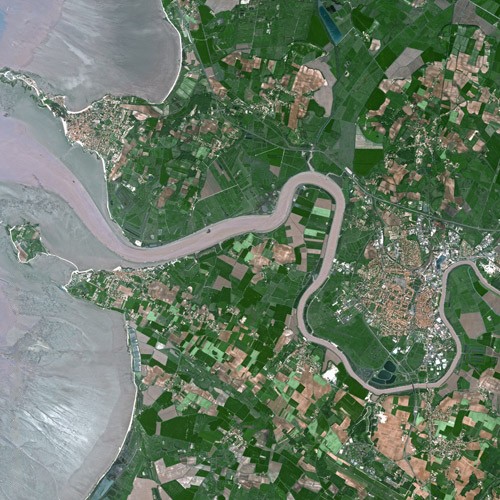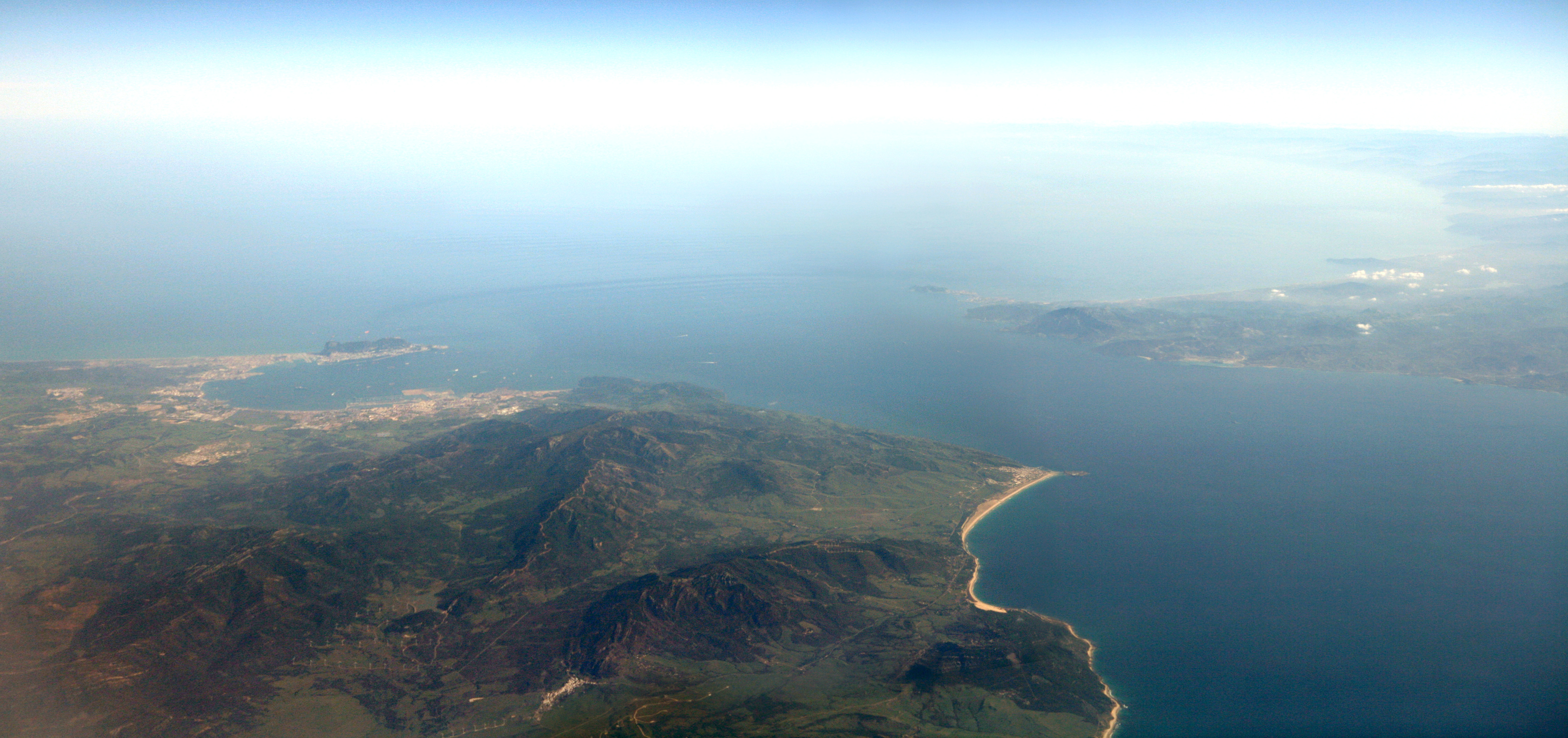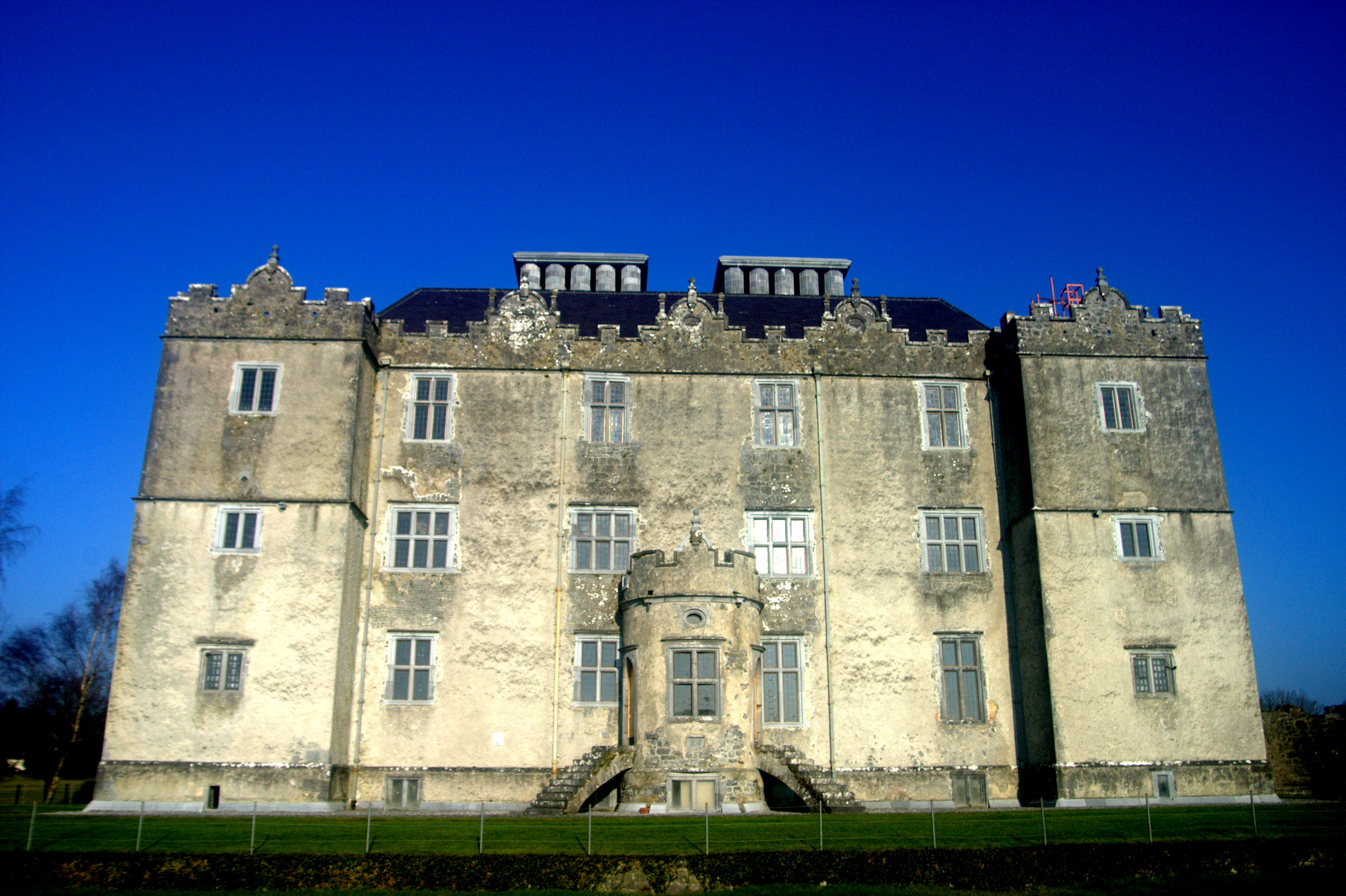|
Battle Of La Hougue
The Battles of Barfleur and La Hougue took place during the Nine Years' War, between 19 May O.S. (29 May N.S.) and 4 June O.S. (14 June N.S.) 1692. The first was fought near Barfleur on 19 May O.S. (29 May N.S.), with later actions occurring between 20 May O.S. (30 May N.S.) and 4 June O.S. (14 June N.S.) at Cherbourg and Saint-Vaast-la-Hougue in Normandy, France. The French attempt to restore James II to the English throne—the Williamite War in Ireland—ended in defeat in October 1691. Instead, a fleet of 44 ships of the line under Admiral de Tourville was to transport an invasion force commanded by Bernardin Gigault de Bellefonds. The Anglo-Dutch ships wintered in separate ports, and Tourville was ordered to put to sea as early as possible, hoping to intercept them before they could combine. However, when he finally did so in late May, the two fleets under Admiral Edward Russell had already met up and were 82 strong when they encountered the French off Cape Barfleur. ... [...More Info...] [...Related Items...] OR: [Wikipedia] [Google] [Baidu] |
Nine Years' War
The Nine Years' War (1688–1697), often called the War of the Grand Alliance or the War of the League of Augsburg, was a conflict between France and a European coalition which mainly included the Holy Roman Empire (led by the Habsburg monarchy), the Dutch Republic, England, Spain, Savoy, Sweden and Portugal. Although not the first European war to spill over to Europe's overseas colonies, the events of the war spread to such far away places as the Americas, India, and West Africa. It is for this reason that it is sometimes considered the first world war. The conflict encompassed the Glorious Revolution in England, where William of Orange deposed the unpopular James VII and II and subsequently struggled against him for control of Scotland and Ireland, and a campaign in colonial North America between French and English settlers and their respective Native American allies. Louis XIV of France had emerged from the Franco-Dutch War in 1678 as the most powerful monarch in Eu ... [...More Info...] [...Related Items...] OR: [Wikipedia] [Google] [Baidu] |
Rochefort, Charente-Maritime
Rochefort ( oc, Ròchafòrt), unofficially Rochefort-sur-Mer (; oc, Ròchafòrt de Mar, link=no) for disambiguation, is a city and commune in Southwestern France, a port on the Charente estuary. It is a subprefecture of the Charente-Maritime department, located in the administrative region of Nouvelle-Aquitaine (before 2015: Poitou-Charentes). In 2018, it had a population of 23,583. Geography Rochefort lies on the river Charente, close to its outflow into the Atlantic Ocean. It is about 30 km southeast of La Rochelle. Rochefort station has rail connections to La Rochelle, Nantes and Bordeaux. History In December 1665, Rochefort was chosen by Jean-Baptiste Colbert as a place of "refuge, defence and supply" for the French Navy. The Arsenal de Rochefort served as a naval base and dockyard until it closed in 1926. In September 1757, Rochefort was the target of an ambitious British raid during the Seven Years' War. Another infrastructure of early Rochefort from 1766 w ... [...More Info...] [...Related Items...] OR: [Wikipedia] [Google] [Baidu] |
Villette Mursay
Philippe Marquis de Villette-Mursay (1627 – 25 December 1707) was a French naval commander. Biography He was born in Normandy as the son of Benjamin de Villette (1582–1661) and Louise Arthémise d’Aubigné.Françoise d'Aubigné, the future marquise de Maintenon and second wife of Louis XIV, was his cousin. She lived in his parents' house, the Château de Mursay, and received a Calvinist upbringing until the age of seven. After a disappointing career in the Army, Villette-Mursay chose a career in the young French Navy under Colbert. In 1672 he was promoted to captain and received in 1674 command of his own ship : ''l'Apollon''. He first distinguished himself on 8 January 1676 in the Battle of Stromboli against De Ruyter commanding ''L'Assuré''. He again fought in a pitched battle a few months later near Agosta. In 1680 he sailed to the Caribbean Sea as captain of ''Les Jeux'' (36) in the fleet of Jean II d'Estrées. On his return in March 1681, he learned, to his fur ... [...More Info...] [...Related Items...] OR: [Wikipedia] [Google] [Baidu] |
Strait Of Gibraltar
The Strait of Gibraltar ( ar, مضيق جبل طارق, Maḍīq Jabal Ṭāriq; es, Estrecho de Gibraltar, Archaism, Archaic: Pillars of Hercules), also known as the Straits of Gibraltar, is a narrow strait that connects the Atlantic Ocean to the Mediterranean Sea and separates the Iberian Peninsula in Europe from Morocco in Africa. The two continents are separated by of ocean at the Strait's narrowest point between Punta de Tarifa, Point Marroquí in Spain and Point Cires in Morocco. Ferries cross between the two continents every day in as little as 35 minutes. The Strait's depth ranges between which possibly interacted with the lower mean sea level of the last major glaciation 20,000 years ago when the level of the sea is believed to have been lower by . The strait lies in the territorial waters of Morocco, Spain, and the British overseas territory of Gibraltar. Under the United Nations Convention on the Law of the Sea, foreign vessels and aircraft have the freedom of navi ... [...More Info...] [...Related Items...] OR: [Wikipedia] [Google] [Baidu] |
Toulon
Toulon (, , ; oc, label=Provençal, Tolon , , ) is a city on the French Riviera and a large port on the Mediterranean coast, with a major naval base. Located in the Provence-Alpes-Côte d'Azur region, and the Provence province, Toulon is the prefecture of the Var department. The Commune of Toulon has a population of 176,198 people (2018), making it France's 13th-largest city. It is the centre of an urban unit with 580,281 inhabitants (2018), the ninth largest in France. Toulon is the third-largest French city on the Mediterranean coast after Marseille and Nice. Toulon is an important centre for naval construction, fishing, wine making, and the manufacture of aeronautical equipment, armaments, maps, paper, tobacco, printing, shoes, and electronic equipment. The military port of Toulon is the major naval centre on France's Mediterranean coast, home of the French aircraft carrier '' Charles de Gaulle'' and her battle group. The French Mediterranean Fleet is based in Toulon ... [...More Info...] [...Related Items...] OR: [Wikipedia] [Google] [Baidu] |
Victor Marie D'Estrées
The name Victor or Viktor may refer to: * Victor (name), including a list of people with the given name, mononym, or surname Arts and entertainment Film * ''Victor'' (1951 film), a French drama film * ''Victor'' (1993 film), a French short film * ''Victor'' (2008 film), a 2008 TV film about Canadian swimmer Victor Davis * ''Victor'' (2009 film), a French comedy * ''Victor'', a 2017 film about Victor Torres by Brandon Dickerson * ''Viktor'' (film), a 2014 Franco/Russian film Music * ''Victor'' (album), a 1996 album by Alex Lifeson * "Victor", a song from the 1979 album '' Eat to the Beat'' by Blondie Businesses * Victor Talking Machine Company, early 20th century American recording company, forerunner of RCA Records * Victor Company of Japan, usually known as JVC, a Japanese electronics corporation originally a subsidiary of the Victor Talking Machine Company ** Victor Entertainment, or JVCKenwood Victor Entertainment, a Japanese record label ** Victor Interactiv ... [...More Info...] [...Related Items...] OR: [Wikipedia] [Google] [Baidu] |
Brest, France
Brest (; ) is a port city in the Finistère department, Brittany. Located in a sheltered bay not far from the western tip of the peninsula, and the western extremity of metropolitan France, Brest is an important harbour and the second French military port after Toulon. The city is located on the western edge of continental France. With 142,722 inhabitants in a 2007 census, Brest forms Western Brittany's largest metropolitan area (with a population of 300,300 in total), ranking third behind only Nantes and Rennes in the whole of historic Brittany, and the 19th most populous city in France; moreover, Brest provides services to the one million inhabitants of Western Brittany. Although Brest is by far the largest city in Finistère, the ''préfecture'' (regional capital) of the department is the much smaller Quimper. During the Middle Ages, the history of Brest was the history of its castle. Then Richelieu made it a military harbour in 1631. Brest grew around its arsenal un ... [...More Info...] [...Related Items...] OR: [Wikipedia] [Google] [Baidu] |
Le Havre
Le Havre (, ; nrf, Lé Hâvre ) is a port city in the Seine-Maritime department in the Normandy region of northern France. It is situated on the right bank of the estuary of the river Seine on the Channel southwest of the Pays de Caux, very close to the Prime Meridian. Le Havre is the most populous commune of Upper Normandy, although the total population of the greater Le Havre conurbation is smaller than that of Rouen. After Reims, it is also the second largest subprefecture in France. The name ''Le Havre'' means "the harbour" or "the port". Its inhabitants are known as ''Havrais'' or ''Havraises''. The city and port were founded by King Francis I in 1517. Economic development in the Early modern period was hampered by religious wars, conflicts with the English, epidemics, and storms. It was from the end of the 18th century that Le Havre started growing and the port took off first with the slave trade then other international trade. After the 1944 bombings the firm ... [...More Info...] [...Related Items...] OR: [Wikipedia] [Google] [Baidu] |
Siege Of Limerick (1691)
The siege of Limerick in western Ireland was a second siege of the town during the Williamite War in Ireland (1689–1691). The city, held by Jacobite forces, was able to beat off a Williamite assault in 1690. However, after a second siege in August–October 1691, it surrendered on favourable terms. Siege By the time of the second siege, the military situation had turned against the Jacobites; their main force had been badly defeated at the Battle of Aughrim in July, with over 4,000 killed, including their commander, the Marquis de St Ruth, and thousands more either taken prisoner or deserted. The town of Galway capitulated in July 1691; its Jacobite garrison was accorded 'all the honours of war,' which allowed them to retain their weapons and receive a free pass to Limerick. However, although its defences had been considerably strengthened since 1690, morale was now much lower after a series of defeats and retreats. By now, siege warfare was an exact art, the rules of whic ... [...More Info...] [...Related Items...] OR: [Wikipedia] [Google] [Baidu] |
Flight Of The Wild Geese
The Flight of the Wild Geese was the departure of an Irish Jacobite army under the command of Patrick Sarsfield from Ireland to France, as agreed in the Treaty of Limerick on 3 October 1691, following the end of the Williamite War in Ireland. More broadly, the term Wild Geese is used in Irish history to refer to Irish soldiers who left to serve in continental European armies in the 16th, 17th and 18th centuries. An earlier exodus in 1690, during the same war, had formed the French Irish Brigade, who are sometimes misdescribed as Wild Geese. By country Spanish service The first Irish troops to serve as a unit for a continental power formed an Irish regiment in the Spanish Army of Flanders in the Eighty Years' War in the 1590s. The regiment had been raised by an English Catholic, William Stanley, in Ireland from native Irish soldiers and mercenaries, whom the English authorities wanted out of the country. (See also Tudor conquest of Ireland). Stanley was given a commission ... [...More Info...] [...Related Items...] OR: [Wikipedia] [Google] [Baidu] |
Irish Royal Army
Irish may refer to: Common meanings * Someone or something of, from, or related to: ** Ireland, an island situated off the north-western coast of continental Europe ***Éire, Irish language name for the isle ** Northern Ireland, a constituent unit of the United Kingdom of Great Britain and Northern Ireland ** Republic of Ireland, a sovereign state * Irish language, a Celtic Goidelic language of the Indo-European language family spoken in Ireland * Irish people, people of Irish ethnicity, people born in Ireland and people who hold Irish citizenship Places * Irish Creek (Kansas), a stream in Kansas * Irish Creek (South Dakota), a stream in South Dakota * Irish Lake, Watonwan County, Minnesota * Irish Sea, the body of water which separates the islands of Ireland and Great Britain People * Irish (surname), a list of people * William Irish, pseudonym of American writer Cornell Woolrich (1903–1968) * Irish Bob Murphy, Irish-American boxer Edwin Lee Conarty (1922–1961) * Irish McCal ... [...More Info...] [...Related Items...] OR: [Wikipedia] [Google] [Baidu] |






